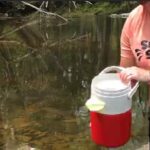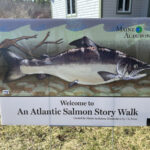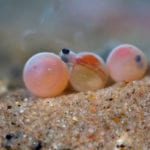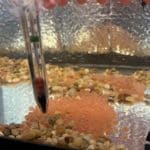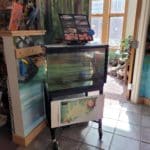
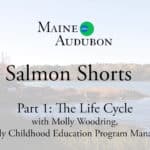
Maine currently has the last remaining wild population of Atlantic Salmon in the U.S. Because of the dramatic decline in this iconic species, it is currently listed as ‘Endangered’ under the Endangered Species Act – but efforts are underway to reverse this negative trend. Maine Audubon and a number of schools in Maine and Canada are doing their part by participating in Fish Friends, an educational rearing program overseen by the Atlantic Salmon Federation in cooperation with the region’s federal fish hatcheries and agencies.
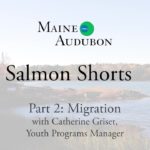
Participating schools–and Maine Audubon’s Gilsland Farm and Fields Pond Audubon Centers–receive Atlantic Salmon eggs from local hatcheries in January or February and raise them until they are ready to be released into the wild in the spring (usually sometime in May). Throughout that time, participants are responsible for keeping the tank and water clean and maintaining the proper water temperature in order to mimic natural stream temperatures.
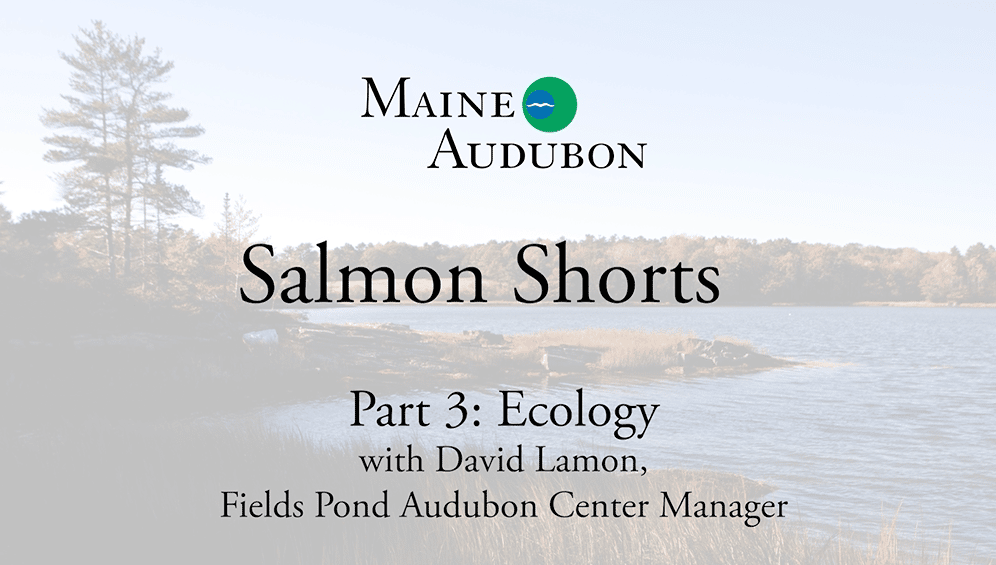
After several weeks in the tank, the salmon eggs hatch into alevins–newly hatched salmon, still attached to the egg sac. Protected in the gravel bottom of the stream (or the tank, in our case), the egg sac will feed the alevin for about a month. Once the egg sac is fully absorbed, the young salmon are then referred to as fry and are able to swim on their own.
From egg arrival to release, the hatchery staff track the natural temperatures of the streams where the fry will go, so Fish Friends participants can maintain the tanks at the same temperatures. That way, when the fish are released, they are used to the temperature they will find in the stream and they are at the right developmental stage.

When they are ready to be released, Fish Friends participants will transport the young salmon fry to their home river and release them, with the help of hatchery staff or other specialists. Hopefully, some of them will survive for a few years in that freshwater habitat, and then head downstream towards the ocean. Like puffins, these salmon will go out to sea as adults and, with luck, return to where they came from to lay their own eggs.
Our goals for hosting this project are focused on learning about life cycles, highlighting Maine’s international habitat value, increasing awareness for Maine’s value for Atlantic Salmon in the U.S., and encouraging participation in expert-led community projects.

